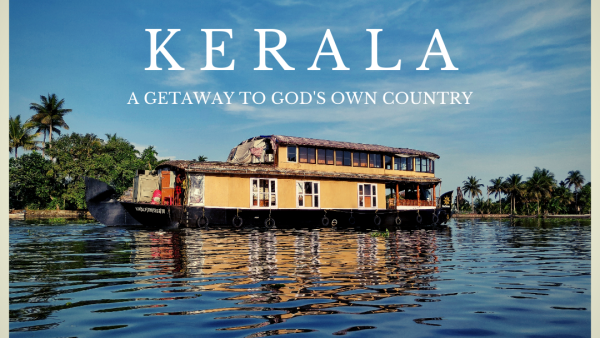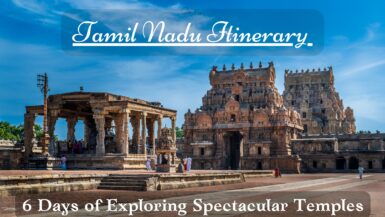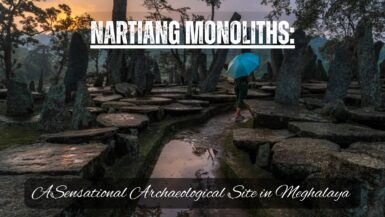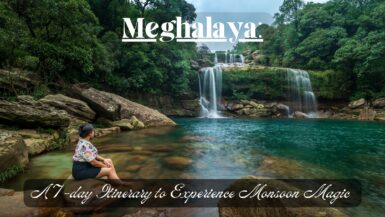God’s Own Country. The cliché phrase to describe Kerala has been overused for its own good. But, there is hardly any other expression that captures the ethos of Kerala. Kerala’s lavish greenery, her endless stretches of verdant tea gardens, her aromatic spice and coffee plantations, her backwaters brimming with autumnal Ambhal flowers, her roads lined with sunflowers and African Tulips, her hills and beaches-everywhere you will feel the magic of the Creator.

Kerala is one of the hottest travel destinations in India. Located along the Malabar coast in southernmost part of India, Kerala is equally popular among honeymoon couples, families with kids and elders, solo travelers and backpackers. Apart from its scenic beauty, Kerala’s cultural heritage such as Kalaripayattu, Kathakali and Mohiniattyam is to die for.
We visited Kerala on a week’s vacation and our route comprised of Cochin-Munnar-Thekkady-Alappuzha-Cochin. If you have an extra 3-4 days of holiday, we suggest visiting Varkala, Kovalam and return home from Thiruvananthpuram.
Table of Contents
Getting in Kerala.
Cochin is well connected with most of the India cities via railway and airway. So is Thiruvananthpuram, if you are planning to start your trip from there. Alternately, you can also fly into Coimbatore and approach Munnar via road from there. The distance between Coimbatore to Munnar is around 155 km.

Moving around Kerala.
Public transport in Kerala is great. KSRTC buses are readily available and they ply frequently between the major tourist hotspots.
However, we suggest hiring a car for the entire trip. It will be hassle-free and give you freedom in terms of time and places of interest.
There are many car rental services available in Kerala. We had booked car from PepperKera Travel Ventures after much research and are overall satisfied with their service. You may also check with J&J Taxi Service, another reputed car rental agency. Renting car in Kerala for 7-8 days will cost around INR 15, 000.
Day 1: Arrive in Cochin, visit Athirappilly and move onto Munnar.
Upon your arrival in Cochin, hop into your rented car and make a quick stopover at the iconic Athirappilly Waterfalls in Thrissur district. Athirappilly is the largest waterfalls of Kerala. It is a 2-hour drive from Cochin (around 66 kms), which will take you through scenic roads fringed with coconut groves.
The spectacular waterfalls, situated on the Chalkudy river, is an imposing 80 ft high. It is surrounded by dense forest of teak, eucalyptus and bamboo. The forest is also home to various endemic animals and birds. Athirappilly is also a perfect spot for birding and it is the only location where all four South Indian varieties of Hornbills are found.
A short walk along a paved, shaded way will bring you at the top of the falls. We, however, suggest hiking down the bumpy trail to reach the bottom of the falls to witness the frothy waters of river cascading its way through.

Afterwards, a 4-hour drive through zigzag roads will bring you to Munnar (around 126 kms).
Staying at Munnar.
From tree houses to forest bungalows, there’s no dearth of exciting accommodations in Munnar suiting every budget. We suggest staying out of Munnar town, as it is crowded and quite chaotic. We stayed at Misty Mountain Resort in Anachal area, which is 8 km away from the town of Munnar. The resort is located in the midst of tea gardens. The USP of the resort is its terrace, which offers stunning panoramic view of Munnar’s tea gardens.

Day 2: Exploring in and around Munnar.
Wake up to a sunny morning and get welcomed by picturesque tea gardens. Let the greenery soothe your mind and sight, as you laze around in your balcony.
There are plenty of spots to explore in and around Munnar. For morning, opt for the off-road Jeep Safari that starts from Chengulam Dam. The safari costs around INR 3000-4000,depending on the season, and takes you through spice and cocoa plantations. It covers the following places:
- Ripple Waterfall, a gorgeous falls with foamy water gushing through a forest-encased valley.
- Hanging Bridge, a picturesque bridge hanging over the river.
- Ponmudi Dam, a hydro-electric project constructed across the Panniar river.
- Echo Point, a scenic location with serene ambiance.
- Sunset Point, a spot to enjoy the commanding view of the entire valley through which the safari is conducted.
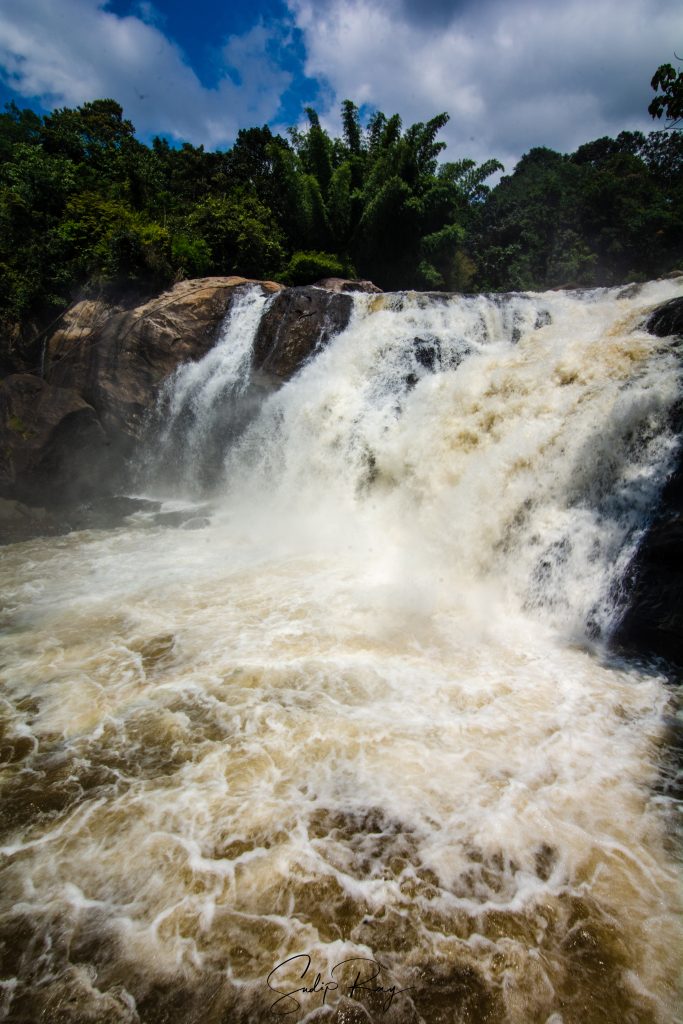
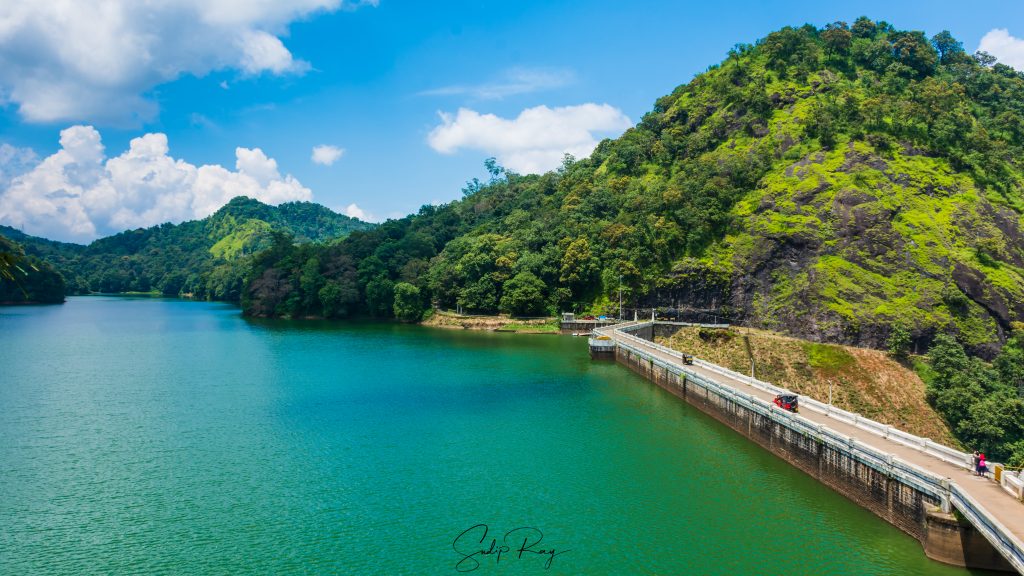
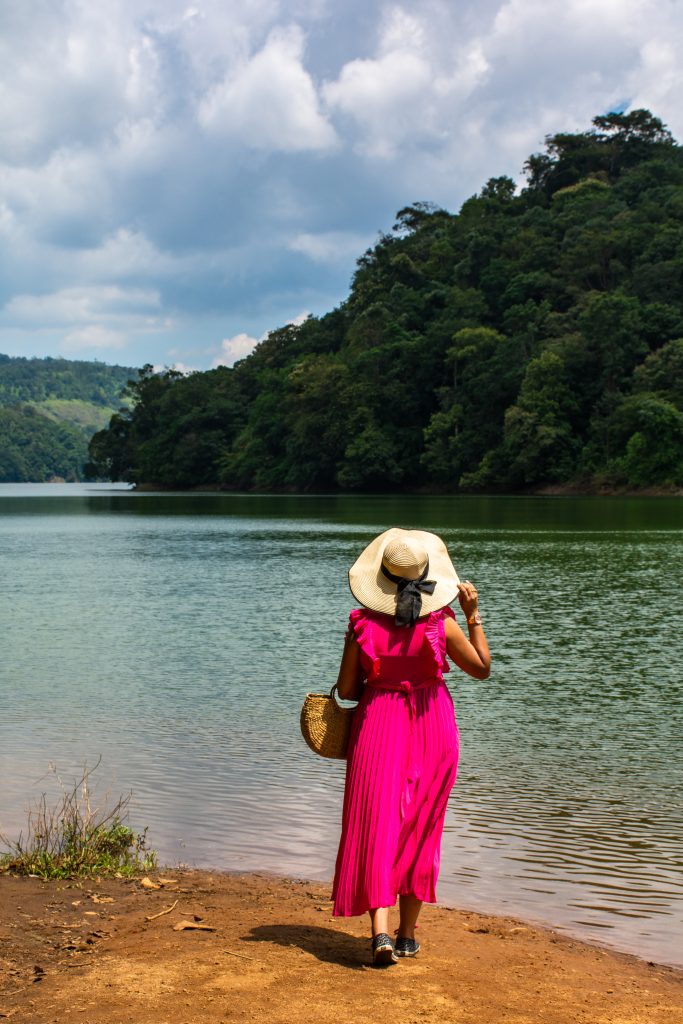
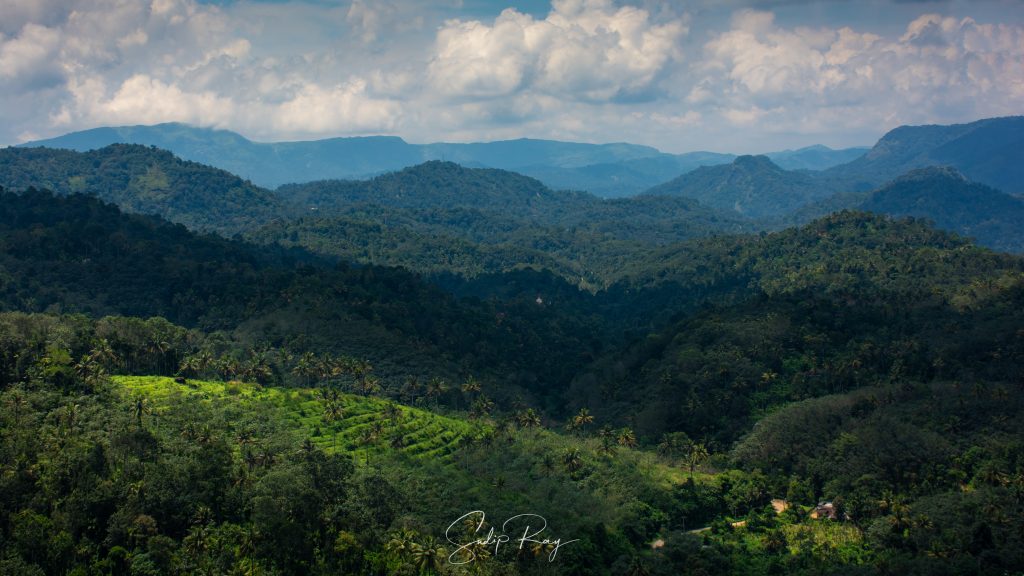
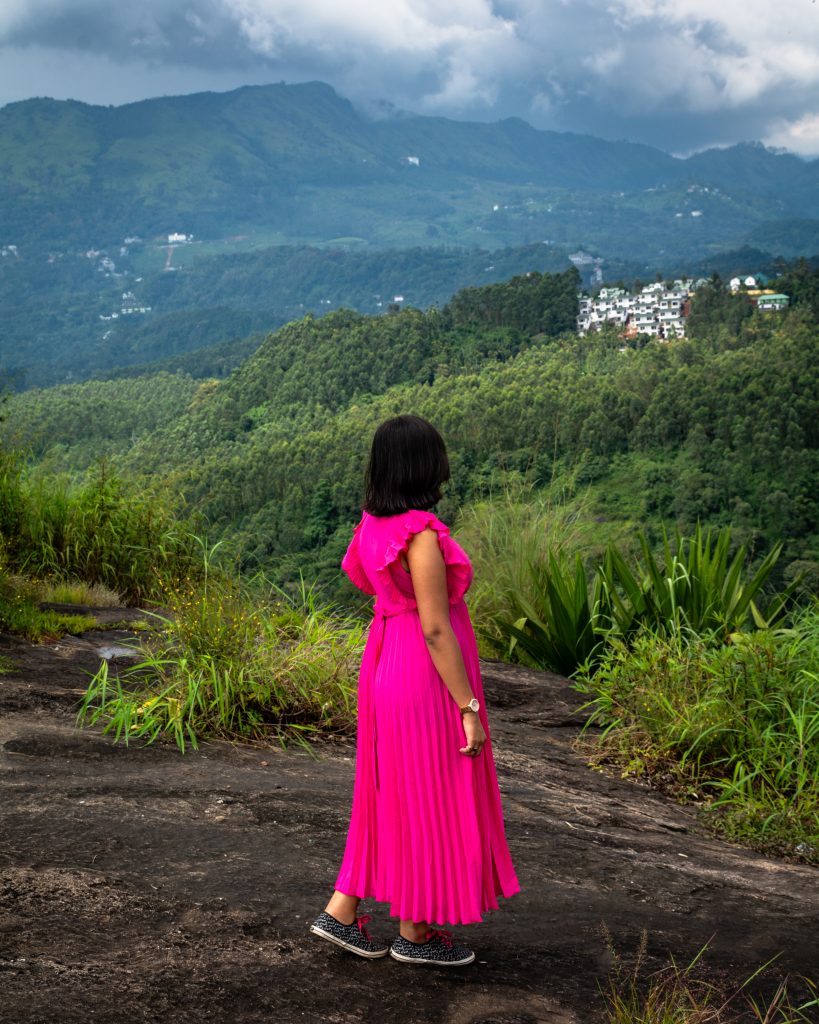
Post lunch, drive through mist laden tea gardens to reach Top Station. The road will take you through magical views as you will be accompanied by gorgeous slopes of Western Ghats and low-lying floating clouds. If you are lucky enough, you might spot elephants on the way! For your afternoon exploration, visit the following places:
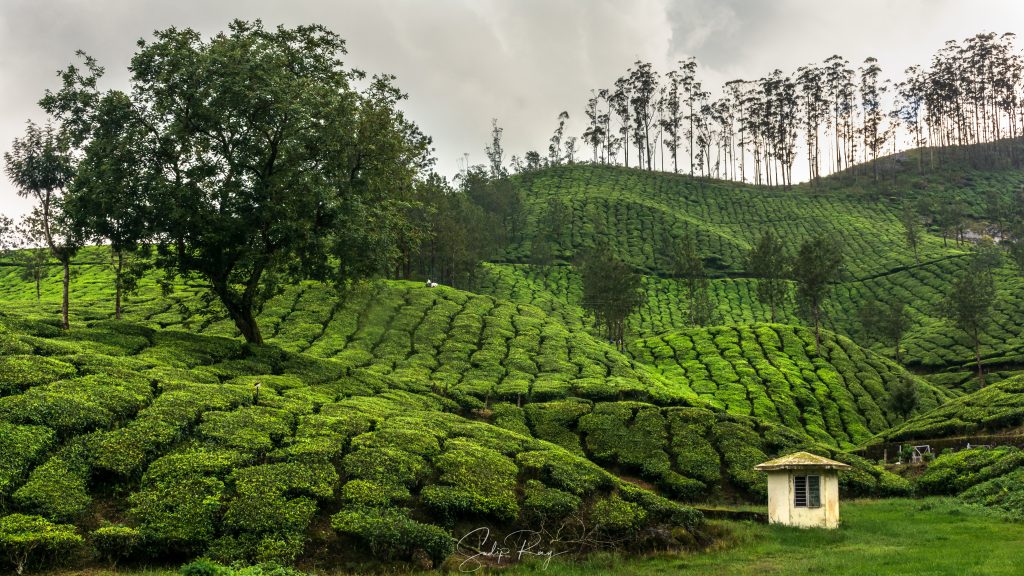
- Top Station, which is located on the Kerala-Tamil Nadu border and known as the historic trans-shipment location for Kannan Devan tea, delivered there from Munnar and Matupetty by railway and down by ropeway to Kottagudi.
- Echo Point, which is situated at the confluence of three mountain streams and got its name from the natural echo phenomenon occurring here.
- Kundala Dam & Lake, which offers a quaint feel with a backdrop of lush woodlands.
- Mattupetti Dam, another of Kerala’s many hydro-electric projects.
- Photo Point, which is a perfect spot for that desired photo in the midst of tea gardens.

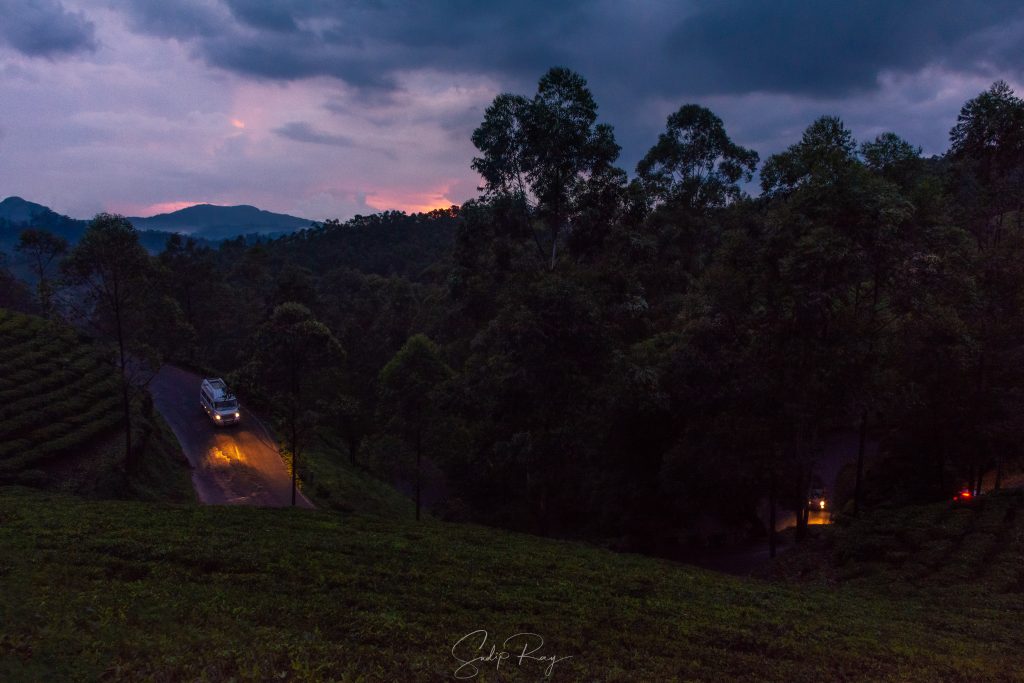
We suggest starting with Top Station and then covering everything else on your way back.
After you have wrapped up your day’s program, sip on hot tea and coffee at Taste the Brews café in Munnar town.
Day 3: Hike through Marayoor and Rajamala.
Start your day by watching the sunrise. You will be amazed how the first, soft rays of sun paint a golden hue over the green tea gardens.
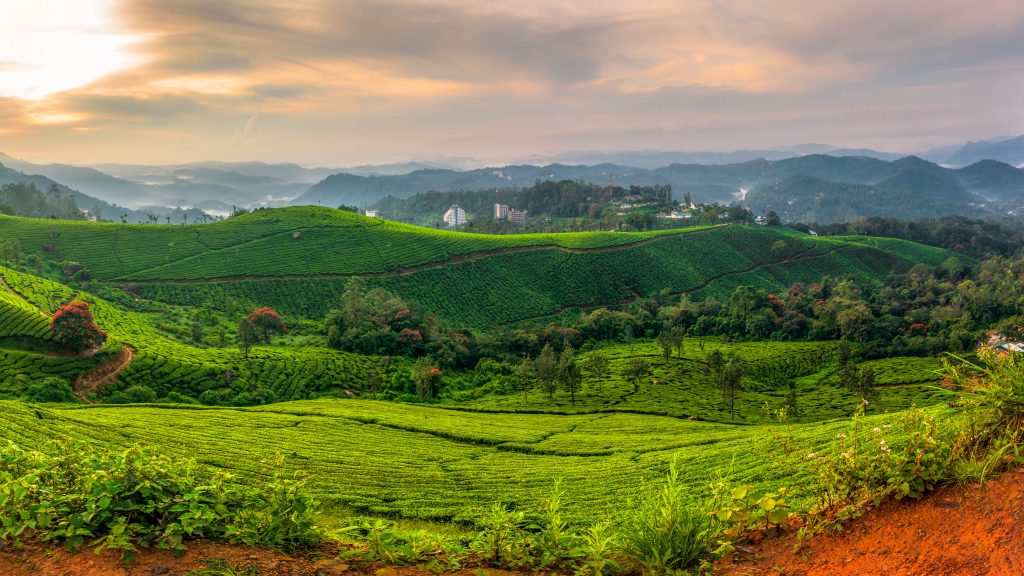
Brace yourselves for an exciting journey to Marayoor that will take you through unending stretches of lush tea gardens, with the fiery African Tulips tinting the otherwise green vista. The road is also occasionally laden with wispy waterfalls rushing down ashen hill slopes. You will be covering a distance of 40 kms.
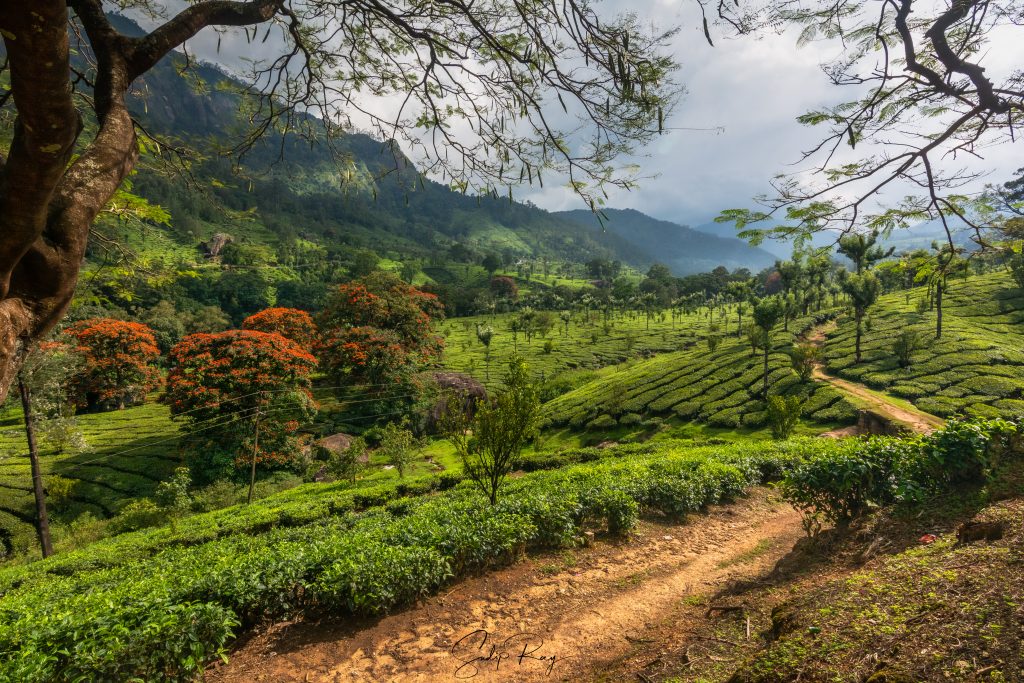
After travelling for an hour and half, you will reach the town of Marayoor. It is renowned as the hub of natural sandalwood trees in Kerala. Furthermore, the jungles of Marayoor are dotted with Dolmens (locally known as Muniyara) and rock paintings, which date back to the Iron Age.
For experiencing Marayoor up, close and personal, we suggest going for the Marayoor Heritage Safari, which is organized by the Chinnar Wildlife Sanctuary and starts from the Karimutty Interpretation Centre. It is a combination of driving through breakneck roads and walking through rugged trails, as the guide explains various tribal rituals and helps to identify sandalwood trees. There are two packages available:
- A 3-hour safari, covering 5 locations and priced at INR 3500.
- A 6-hour safari, taking visitors to 10 locations and priced at INR 5000.
We selected the 3-hour safari and visited the following spots:
- Ezhuthala, where rock paintings as old as 10,000 BC are found.
- Bhramaram View Point, which offers a mind blowing panoramic view of Marayoor and its surroundings.
- Anakottapara Megalithic Park, where the remains of Megalithic Dolmens are located.
- Marayoor Grammam or village, where the Muthuvan and Pulaya tribes reside.
- Sugarcane Farm, as Marayoor is also famous for its jaggery.
This safari can also be booked online. Visit www.chinnar.org for booking.

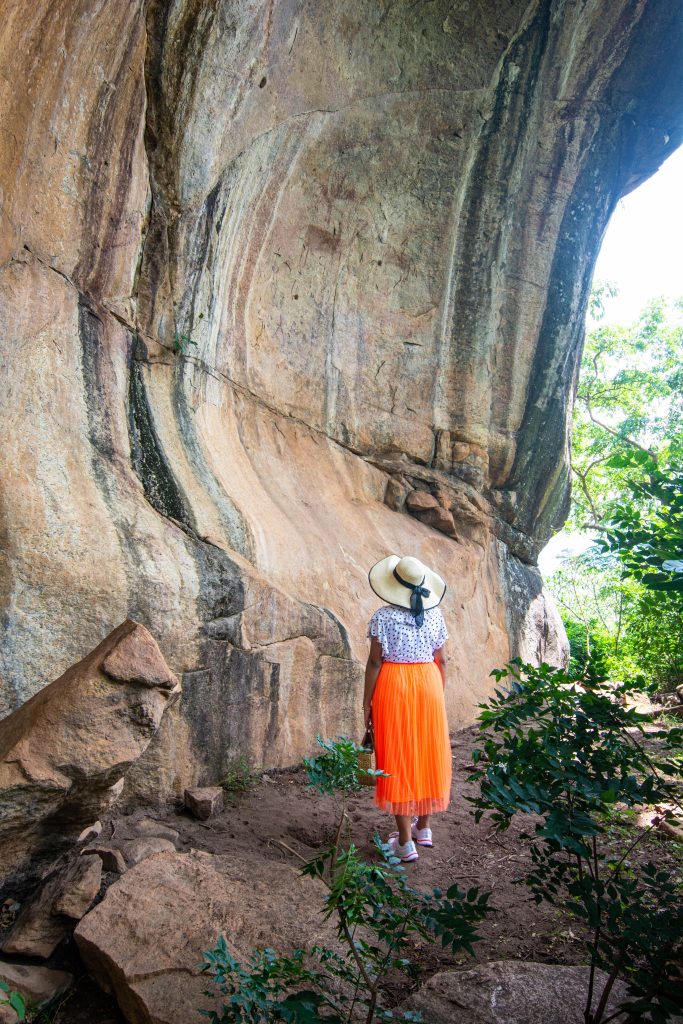
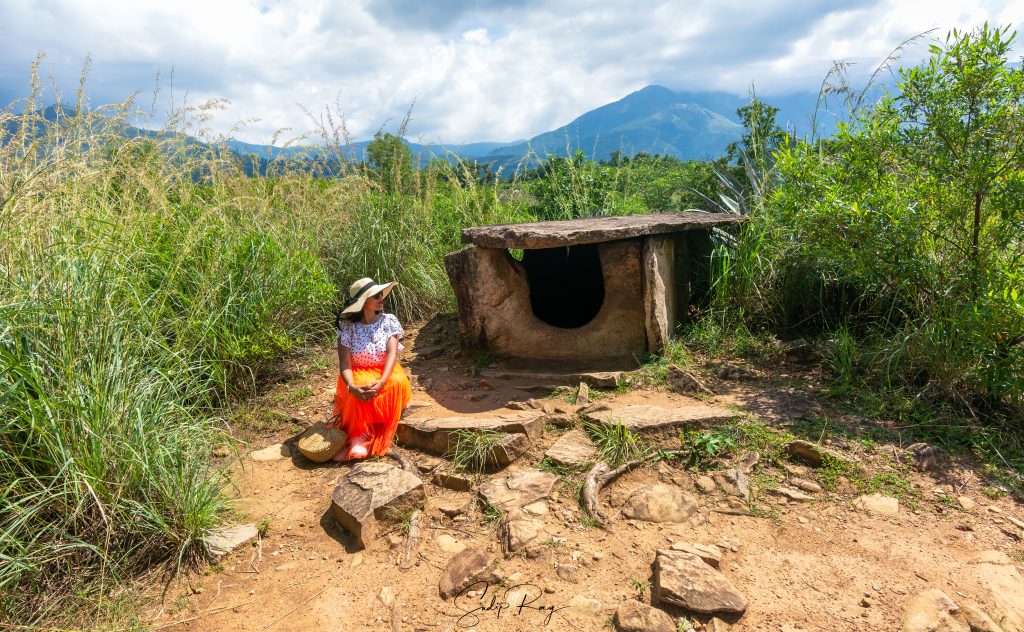
Later in the afternoon, visit the Eravikulam National Park, home of the endangered Nilgiri Tahr. Along with Tahr, 48 species of mammals, 133 types of birds and 101 kinds of butterflies inhabit the park. It is known for mind-blowing views of tea plantations and the exotic Neelakurinji flower, which blooms every 12 years. Anaimudi, the highest peak of Southern India, is also situated in this park.
The safari starts from 8-30 in the morning and continues up to 4 in the afternoon. This is one of the most popular go-to activities of tourists visiting Munnar. As a result, expect long queues for tickets. For avoiding such rush, visit www.eravikulam.org and book your tickets online. Minibuses of the Forest Department ply through the striking Lakkom Mauduvakudy tea estate to bring visitors to the Rajamalai area of the park. From there, you need to trek a 2 km stretch to explore the park.
The trek is extraordinary as you will literally walk in the clouds. The Shola vegetation has rendered a unique feature to this park, by virtue of which the park remains moist, misty, cloudy most of the time. The park looked ethereal, mystified.

It will be a long day, and your last night in Munnar. To make it memorable, go to Alibaba and 41 Dishes for dinner and relish their seafood platters and Kerala thalis in Munnar town.
Day 4: Travel to Thekkady via Idukki Dam.
Time to bid Munnar adieu and head to the next destination, Thekkady. We suggest going for off-beat road and visit the famed Idukki dam en route. After all, it’s quite exciting to see something you read in your school books with your own eyes. From Munnar, you need to drive a distance of about 55 kms to reach Idukki dam. Thekkady is another 48 kms from Idukki dam.
The striking Idukki dam is one of the highest arch dams of Asia. It is constructed across the mighty Periyar river and is one of the potent source of hydro-electricity in Kerala.
The Hillpark View Point offers a commanding panorama of the Idukki dam and its surrounding forest areas. Since it’s not on tourist radar, you may find this place all to yourself. Climb to the top and enjoy moments of serenity here. The view is enticing and you can spend a moment or two alone with your loved one.

From Idukki dam, it takes another one and a half hour to reach Thekkady. The prime attraction of Thekkady is the Periyar National Park and Periyar Tiger Reserve. A host of ecotourism activities such as Nature Walk, Bamboo Rafting, Jungle Scout, Tiger Trail etc is organized by the Forest Department for providing the visitors a close insight into the flora and fauna of Periyar. Visit the Tourist Information Centre at Ambadi Junction, where you can gather information and also book the programs of your choice.
Staying at Thekkady.
We stayed at Periyar House and it was a blunder on our part. Since it is located inside the perimeter of the Periyar National Park and the gate of the forest gets closed at 5 PM, it is impossible to venture outside in the evening for Tribal Dance shows, Kathakali shows, Night Trekking inside Periyar jungles or even a stroll around the vibrant Thekkady streets. We missed the nightly jungle scout, about which we were super excited. Shoddy lodging and awful food made things worse for us. So we strongly advise: DO NOT STAY AT PERIYAR HOUSE.
Instead, look out for accommodation near The Bamboo Grove, from where most of the ecotourism activities start.
Day 5: Hiking inside the depths of Periyar.
The day started with Green Walk, an interactive trekking program accompanied by an experienced tribal guide. It will take you through tribal villages and into the depths of the forest which comprises of grasslands, evergreen and deciduous vegetation. The trek lasts for 3 hours covering roughly 5-6 km and provides a golden opportunity to watch birds, butterflies and animals.

We thoroughly enjoyed every moment inside the forest. We felt the forest to the core through the rustling of leaves, chirping of birds, fluttering of butterflies, spinning of webs by spiders. Our guide also helped us to identify valuable and medicinal trees and plants.
After letting nature amaze you on the trek, it’s time for a hearty breakfast. Go to Coffee Garden, a rooftop café in the midst of greenery. It offers an array of delicious pancakes, omelettes and fresh juices without burning a hole in your pocket.
Later, take a walk in the markets of Thekkady. Quench your urge for shopping by visiting the shops selling homemade chocolates in interesting flavours or the ones selling varieties of spices and coffees. Thekkady also has many shops selling beautiful handicrafts at reasonable prices.
Grab a quick lunch at Ebonys Café, another pretty rooftop café located inside a nondescript lane. They serve tasty food and service is very fast.
In the afternoon, we went for Nature Walk, which is another interpretative program which helps you understand the forest intimately. It takes you to the forest located alongside the Periyar river. A bamboo raft will take you to the other side of the forest. Chances of spotting wildlife along the river bank are more during this trek and we did spot hordes of Indian Gaur, Sambar and Wild Boar. A myriad of sounds ranging from whooping of Langurs to drumming of Woodpeckers to laughing of Malabar Hornbills to creaking of crickets will accompany you all the time.

Day 6: Proceed to Alappuzha.
Start your day by wandering in the surroundings of Periyar House. A stray Sambar or a group of Hill Mynahs may steal your attention.
Afterwards, start your journey towards Alappuzha or erstwhile Alleppey, known as Venice of the East owing to its endless channels of backwaters (distance from Thekkady is 138 kms). It will take almost four hours to reach Alleppey. And don’t forget to make a pit stop to sip on King Coconuts on the way.
After reaching Alappuzha, go for a walk along the Marari beach in the evening. Alternatively, you may also visit the Alleppey beach.
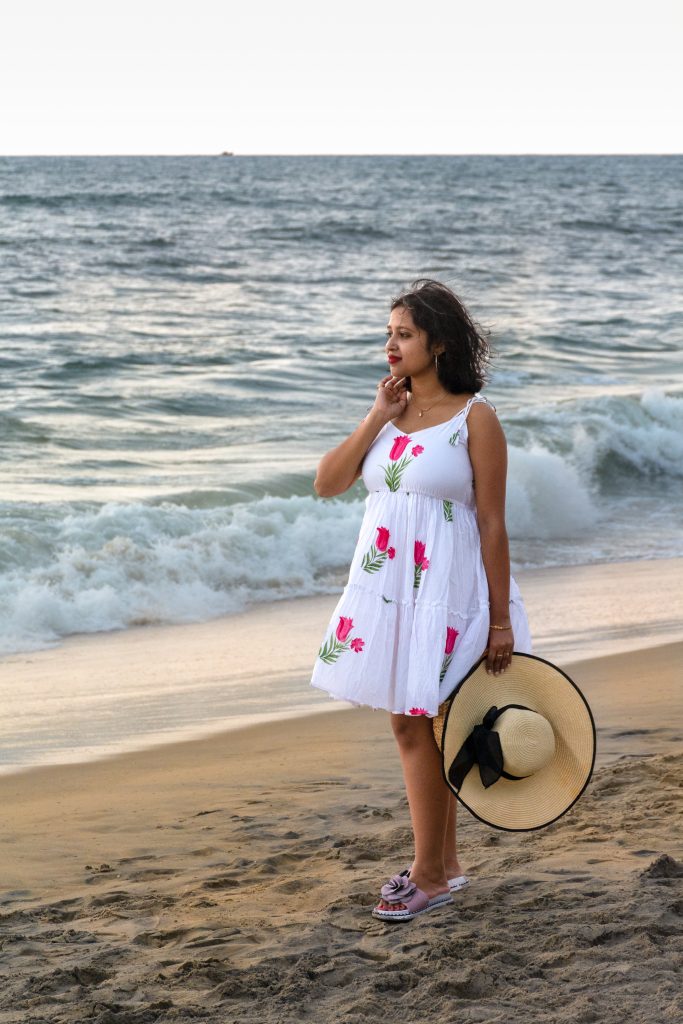
For dinner, head to Thaff if you are craving for a sumptuous Kerala thali. Or if you are craving for mouth-watering Continental delicacies, we suggest Brews and Burgers Bistro.
Staying at Alappuzha.
Alappuzha is lined with charming Kerala-style heritage homestays. We opted for the Kuttichira Heritage Home, which perfectly blends traditional wooden architecture with modern amenities. The homestay is beautiful inside and out. To top it off, the owner and manager are affable. They provide complimentary breakfast. However, for lunch or dinner, you need to order food online or eat out.

Day 7: Floating on backwaters and a riveting Kathakali performance.
One of the prime highlights of Kerala trip has always been the backwaters of Alappuzha. There are four ways to explore the backwaters:
- Houseboats, which is by far the most popular choice. Locally known as Kettuvalloms, they were once used to carry and store grains. Now, they have been converted into fancy hotels on water equipped with every facility.
- Shikaras, another popular option. They are Gondola type light boats, mostly motorized.
- Canoe, a small human-operated narrow boat that sails through the innermost channels of the backwaters, which the houseboats or shikaras fail to venture into. They also help you to take a glimpse into the day-to-day lives of the people who live by the shores of the backwaters.
- Kayak, if you have your adventure sense tingling.

We kicked off our day by scouting the backwaters on a canoe. There are several local tour operators that help you with sightseeing in Alappuzha. We booked our canoe ride from Oscar Cruise. Its office is located near the Alappuzha Fire Station. It provides shikaras, canoes and kayaks at quite moderate rates.
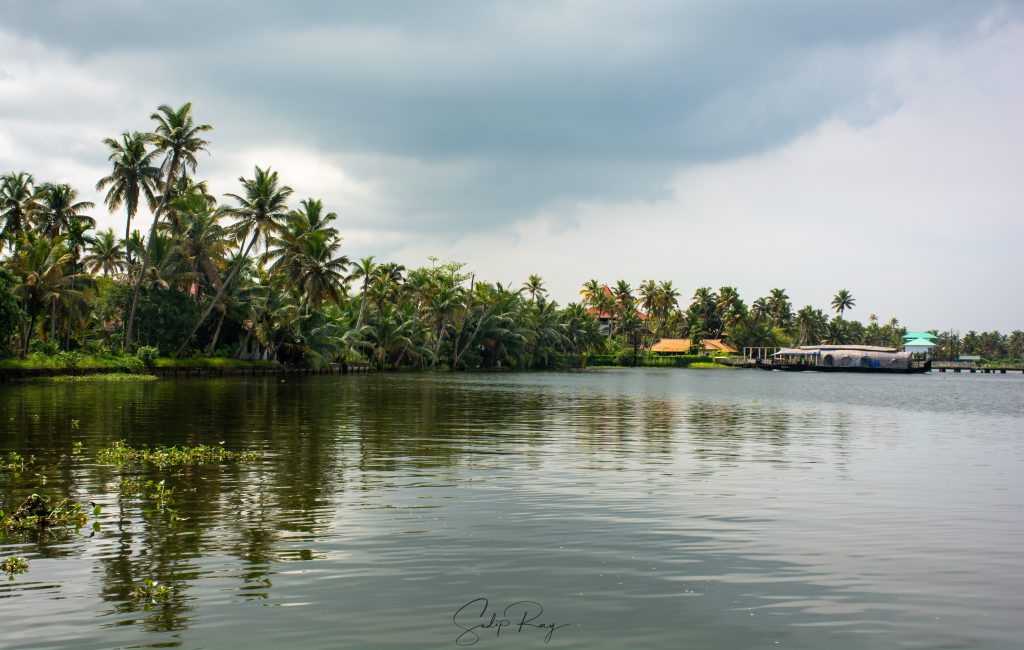
The relaxing canoe ride is an experience like no other. The rising sun, the swaying coconut trees, the splendid houseboats-all combine to give those typical Kerala vibes. You will sail across scenic paddy fields of Kuttanadu, sleepy villages, floating shops, ferry stops and the locals busy in their daily chores. Stop at stalls by the side to experience traditional Kerala breakfast with Puttu and Kadali Kari. Make the most of it as it will soon be time to drive out of Alappuzha.
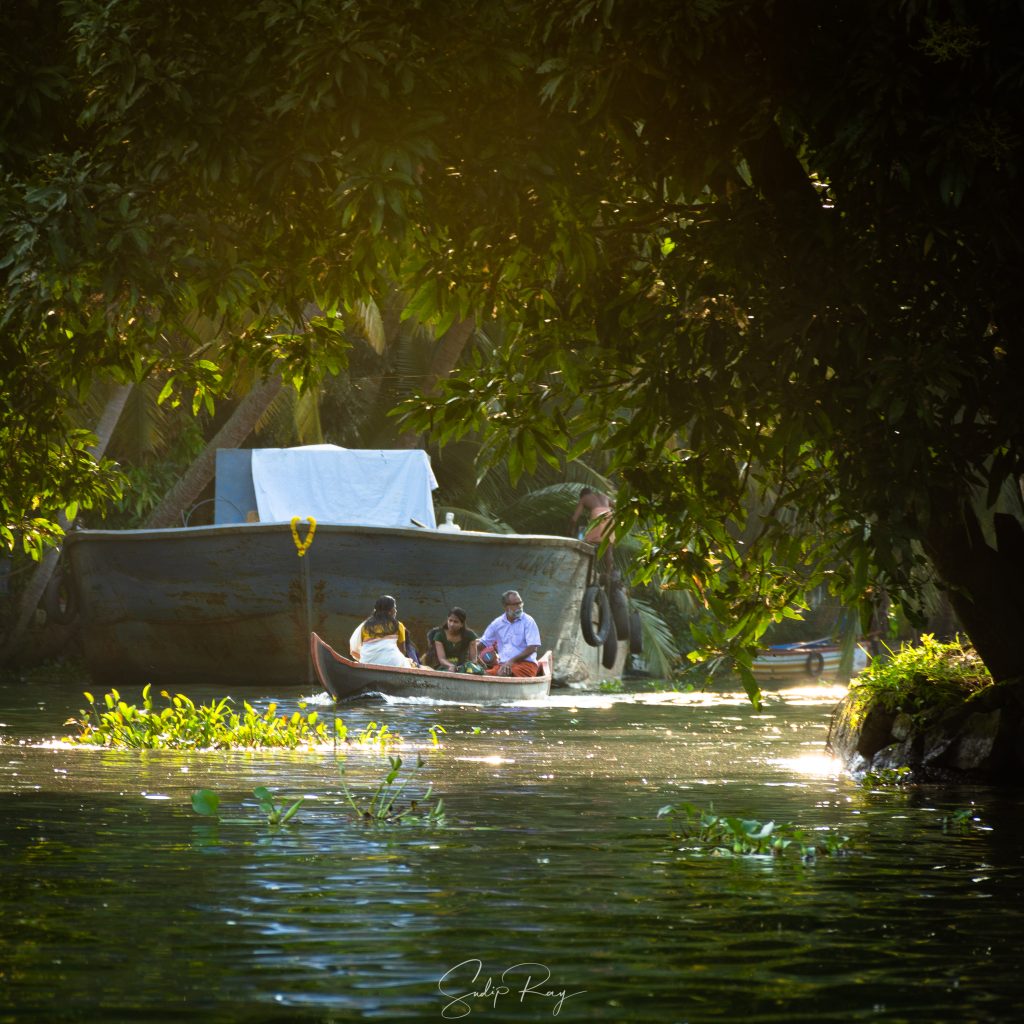
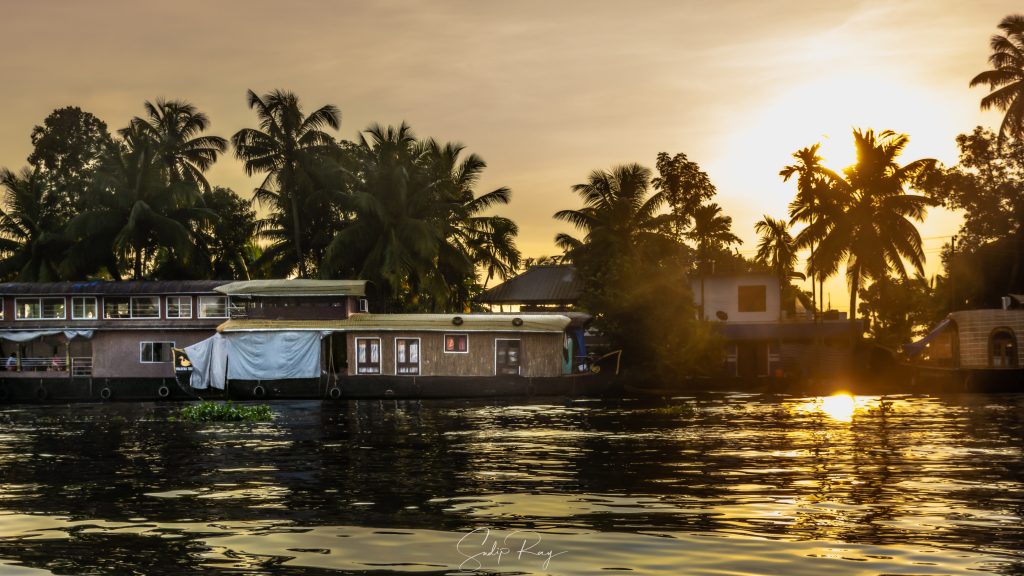
Later, say your goodbyes and leave for Fort Kochi. The drive of an hour and a half isn’t the most scenic as it passes through busy towns (distance is 60 kms).
It will be almost afternoon when you check into your hotel in Fort Kochi. Lose no time, have your lunch, put on a Kasavu and rush to the Kerala Kathakali Centre.
After letting Kerala dazzle you with her bountiful nature, it’s time to immerse yourself in her cultural offerings.
First, let your adrenaline rush as you will be stunned by the agility and deft display of fighting and swordsmanship by the Kalaripayattu warriors. Kalaripayattu, which originated in Kerala, is believed to be the oldest form of martial arts still in vogue.


Then, the stage will be taken over by the Kathakali dancers as they will apply elaborate and colorful make-up. You will be left astounded by their sheer skill and perseverance, by which they prepare themselves before a house full of audience. Afterwards, the artists will enact a short play either from Ramayana or Mahabharata. You will be dazed and left speechless by their brilliant expressions and mudras. Every second of this evening will be etched in your memory.

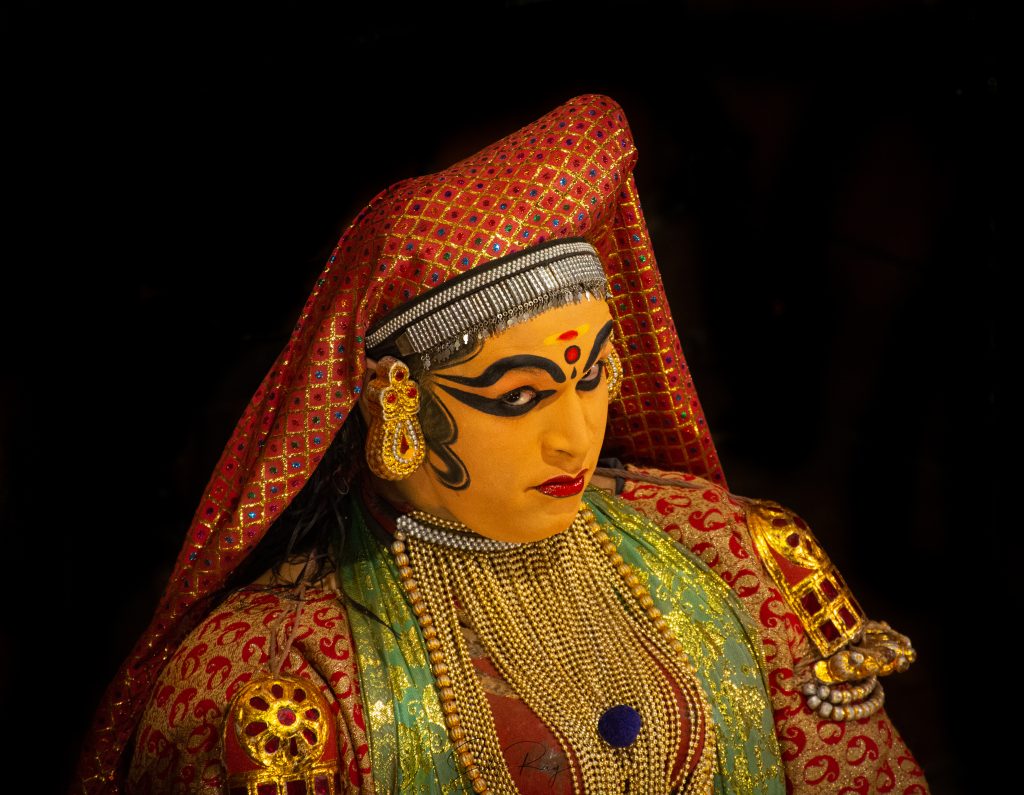

Before calling it a day, pay a visit to the famed Kashi Art Café, one of the first art cafes of India. Dig in their Grilled Chicken Salad and Chicken in Mushroom Sauce for dinner as you relax in its nonchalant ambiance.

Staying at Fort Kochi.
We chose Neemrana’s The Tower House, which is a remodeled 17th century house. It is conveniently located, facing the iconic Chinese fishing nets. It is a fascinating heritage property exuding old world charm with its antique furniture and vintage paintings and photographs.

Day 8: Exploring Fort Kochi and flying back home.
Fort Kochi has some interesting places that you won’t want to miss:
- Walk towards the Vasco Da Gama Square to see the Chinese Fishing Nets in action. The local fishermen are friendly and offer visitors to watch the slow-rhythmic technique closely.
- The St. Francis Church, which is the oldest European church of India. The Portuguese explorer Vasco Da Gama was buried here initially before being moved to Lisbon later.
- The Indo-Portuguese Museum, which showcases specimens of Indian and Portuguese art and architecture.
- The Paradesi Synagogue, which is located in old Kochi and the oldest synagogue in all the Commonwealth nations.
- The Mattancherry Palace, one of the oldest buildings of Kerala and houses captivating mythological murals.
- If you have more time in your hand, pay a visit to the Vyapin Island and the beautiful Cherai beach, which is just an hour drive from Fort Kochi.

That’s it folks! Here ends our riveting trip through the nooks and corners of idyllic central Kerala. It’s time to fly back home with loads of memories.
Tips for visiting Kerala.
- Best time to visit Kerala is between October-February. However, Munnar is one of the leading monsoon destinations of India, hence it can also be visited in July-September.
- The Rajamalai National Park remains closed in February-March. So, plan accordingly.
- It’s better to visit Periyar National Park in the summer months of April-May, as chances of sightings increase proportionately.
- Language might be a problem, Google Translate will prove handy.
- For buying spices and local products in Thekkady, you may go to Responsible Tourism Spice Super Market, which is located just opposite of Kadathanadan Kathakali Centre. Also, there are several shops selling spices and chocolates near the Mary & Christ Statue.
- We suggest avoid opting for houseboats in Alappuzha, as they not only are the prime cause of backwater pollution, but also do not deliver an in-depth experience of backwater life.
- Try taking early morning sail across the backwater, as its cooler and crowd is mostly nil.
- Please refrain from disposing plastic or any other garbage into the backwater. The backwater is precious both for the ecology and local people.
- Start exploring Fort Kochi in the early morning as the temperature soars as the day progresses. It makes travelling discomforting.
- For buying handicrafts in Cochin, drop by Kerala Handicrafts at M.G. Road. They sell various artifacts at reasonable price.

